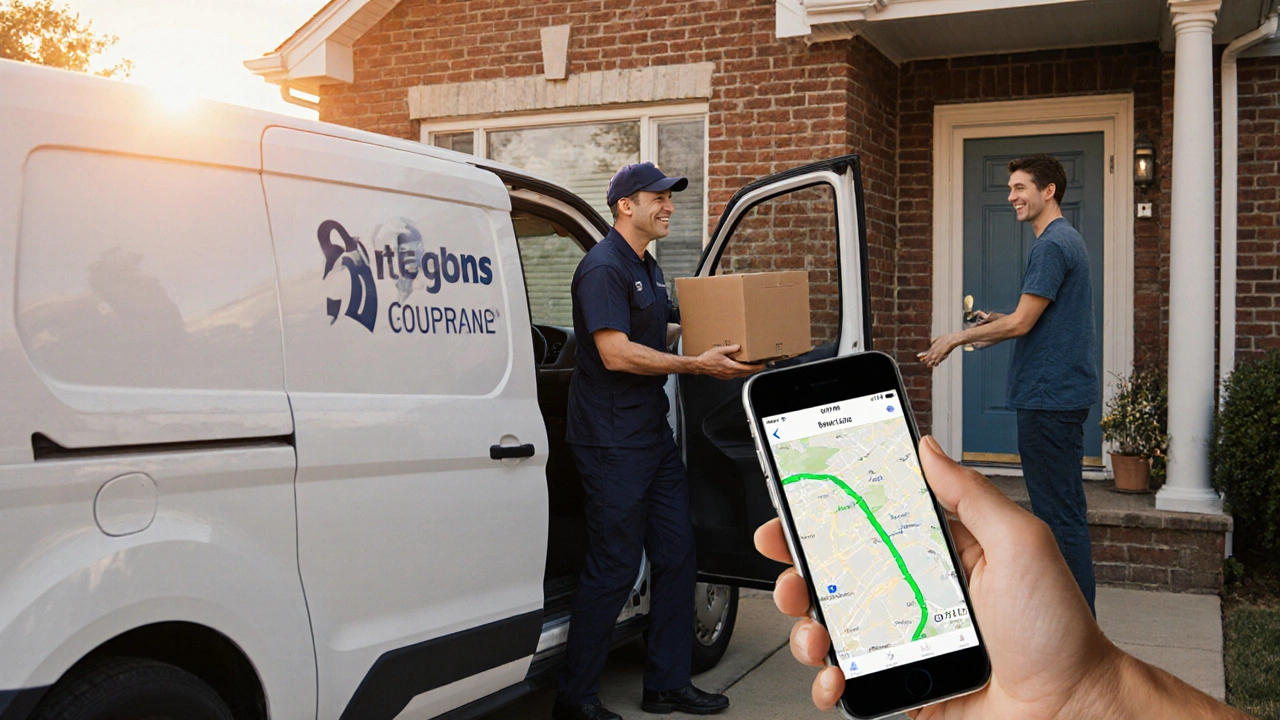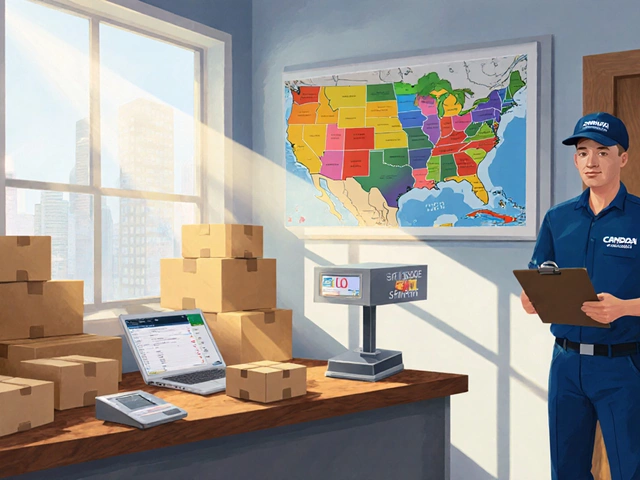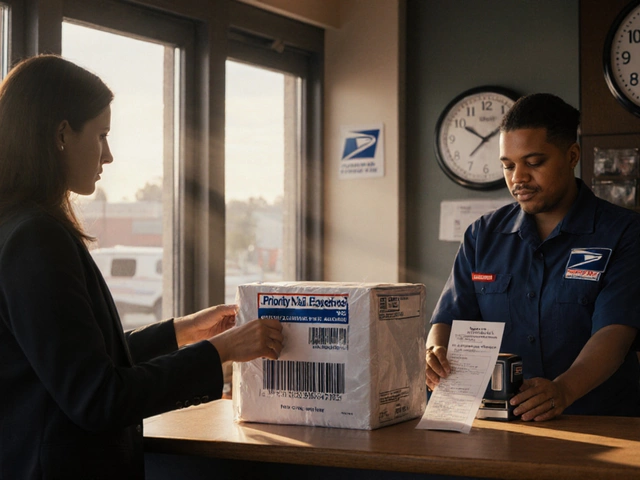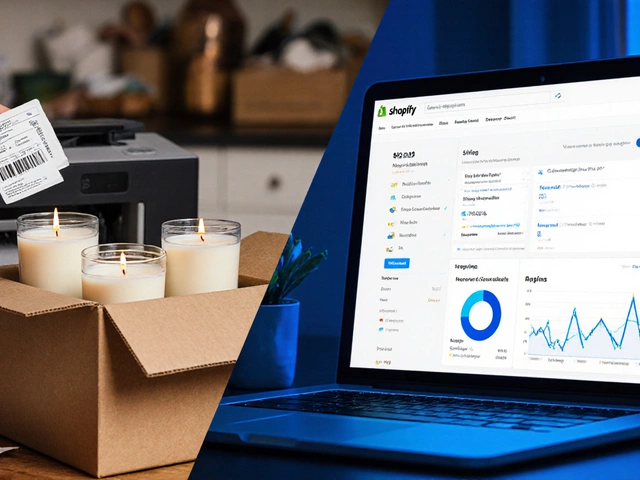Courier Shipping Cost Calculator
Estimate Your Shipping Cost
Calculate costs for domestic and international shipments based on real pricing factors
Results will appear here after calculation
When you hear the term courier service is a business that moves packages, documents, or freight quickly from point A to point B, usually offering door‑to‑door handling and tracking, you probably picture a big logo on the side of a van. But the world of couriers is far richer than a few household names. Below you’ll find a practical courier example that shows how different services fit everyday shipping needs, plus tips for picking the right partner for your next shipment.
What Exactly Is a Courier Service?
A courier service differs from standard postal delivery in three key ways:
- Speed: Couriers specialize in faster, often same‑day or next‑day delivery.
- Tracking: Real‑time visibility lets senders and receivers see where a package is at any moment.
- Door‑to‑door handling: The package is picked up from the sender’s location and delivered straight to the recipient’s door, without passing through a post office.
This model makes couriers the go‑to choice for e‑commerce retailers, medical labs, legal firms, and anyone who can’t afford the uncertainty of regular mail.
Major Types of Couriers
Not all couriers work the same way. Understanding the main categories helps you match a service to the job.
- National express couriers: Operate within a single country, offering next‑day or two‑day guarantees. Examples include FedEx Express (U.S.), UPS Canada, and Purolator in Canada.
- International logistics couriers: Provide cross‑border shipping with customs clearance. DHL Express and FedEx International are classic players.
- Local same‑day couriers: Focus on rapid city‑level delivery, often using bikes or small vans. Companies like OnTrac (U.S. West Coast) and local bike‑courier cooperatives in Toronto fit here.
- Freight‑focused couriers: Move larger pallets or crates that need quick handling but exceed regular parcel size. Purolator Freight and UPS Freight excel in this niche.
- Special‑purpose couriers: Handle temperature‑sensitive items, legal documents, or high‑value goods. Services such as FedEx SameDay City or DHL Medical Express are tailored for those needs.
Real‑World Courier Examples
Below are five widely‑used couriers, each with a brief snapshot of what they do best. The first mention of each company includes microdata so search engines can recognize the entity.
FedEx started in 1971 and quickly grew into an international powerhouse. It offers everything from overnight parcels to freight‑level shipping, with a strong emphasis on real‑time tracking and a robust customs brokerage network.
UPS (United Parcel Service) began as a messenger service in 1913 and now provides a full suite of domestic and international options, including UPS Ground, UPS 2‑Day Air, and UPS Worldwide Express.
DHL is the go‑to choice for many European businesses needing fast cross‑border delivery. Its Express division promises delivery in 1-3 business days to most major markets.
Purolator is Canada’s home‑grown courier, known for its reliable next‑day service across the country and strong e‑commerce integrations.
Canada Post offers an Expresspost service that competes directly with private couriers on speed and cost for domestic shipments, while also handling international parcels through its Global Parcel network.
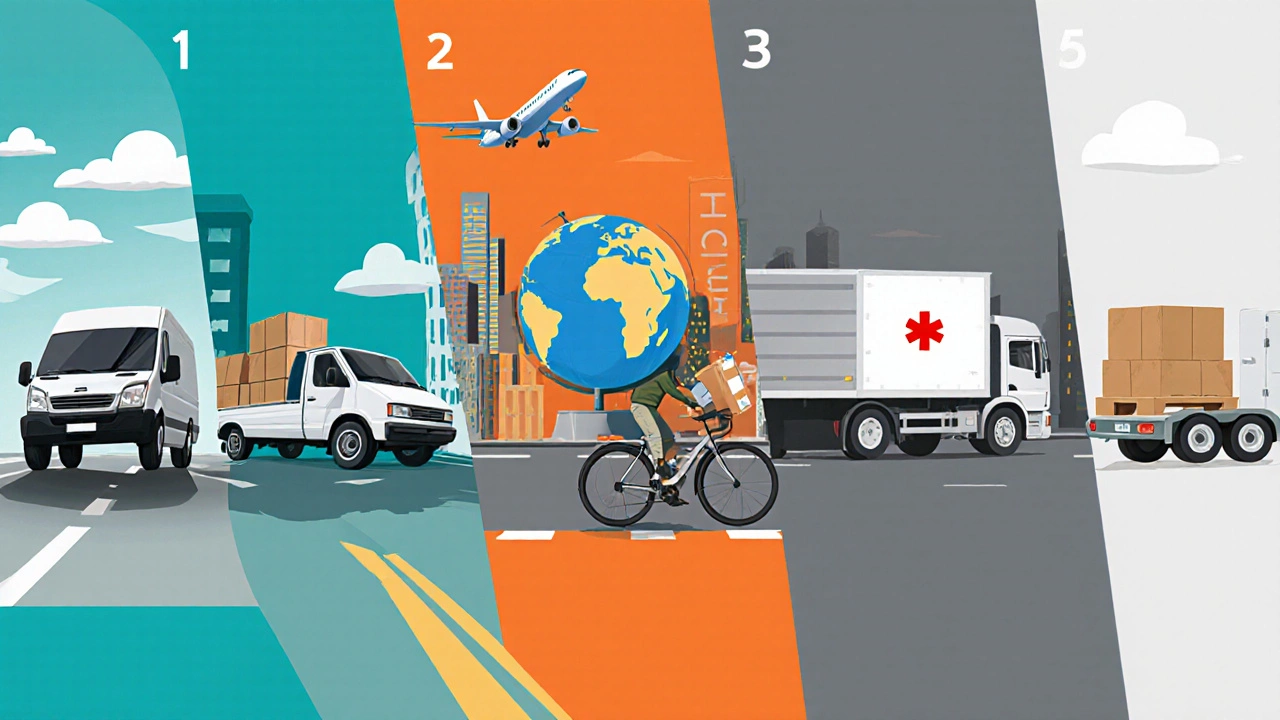
How to Choose the Right Courier for Your Shipment
Picking a courier isn’t just about brand recognition. Use the following checklist to align service capabilities with your requirements:
- Delivery speed needed: If you need same‑day, look at local bike‑courier networks or OnTrac. For next‑day, most national express carriers qualify.
- Package size and weight: Heavy pallets demand freight‑focused couriers; lightweight parcels can go with standard parcel services.
- Geographic coverage: An international shipment will need a carrier with a strong customs foothold-DHL and FedEx excel here.
- Special handling: Temperature‑sensitive medical samples require a specialized service like FedEx SameDay City or DHL Medical Express.
- Technology integration: If your e‑commerce platform needs automatic label generation and tracking updates, choose a courier with robust API support (UPS, FedEx, and Purolator all provide this).
- Cost constraints: Compare base rates, fuel surcharges, and any hidden fees. Domestic services from Canada Post often beat private carriers on price for low‑value items.
Typical Pricing Factors
Understanding how couriers calculate rates can prevent surprise invoices.
| Factor | Impact |
|---|---|
| Distance (zone) | Longer zones increase base price exponentially. |
| Weight & dimensions | Heavier or bulky items cost more; volumetric weight often applies. |
| Delivery speed | Same‑day > overnight > standard, each step adds a premium. |
| Fuel surcharge | Variable; carriers publish a percentage that changes monthly. |
| Additional services | Signature required, insurance, or weekend delivery add fixed fees. |
For example, shipping a 5‑kg parcel from Toronto to Vancouver with UPS 2‑Day Air might cost CAD 45 plus a 7 % fuel surcharge, while the same package via Canada Post Expresspost could be CAD 38 with no extra surcharge.
Common Pitfalls and How to Avoid Them
Even seasoned shippers run into hiccups. Here are three frequent mistakes and quick fixes.
- Incorrect dimensions: Couriers calculate volumetric weight using length × width × height ÷ 5000 (kg). Double‑check measurements before labeling to avoid surprise upgrades.
- Missing customs paperwork: International shipments need accurate HS codes and commercial invoices. Use the carrier’s online customs tools to generate compliant documents.
- Overlooking insurance: High‑value items (jewelry, electronics) should be insured. Many couriers offer “Declared Value” coverage; verify limits before shipping.
Quick Takeaways
- A courier service is a fast, door‑to‑door shipping option with real‑time tracking.
- Major players include FedEx, UPS, DHL, Purolator, and Canada Post, each with a distinct strength.
- Match speed, size, geography, and special‑handling needs when choosing a carrier.
- Watch weight, dimensions, fuel surcharges, and extra services to keep costs predictable.
- Validate customs paperwork and insure valuable shipments to avoid costly delays.
Comparison of Popular Couriers
| Courier | Headquarters | Typical Domestic Speed | International Reach | Notable Feature |
|---|---|---|---|---|
| FedEx | Memphis, USA | Overnight (U.S./Canada) | 220+ countries | Advanced tracking API |
| UPS | Atlanta, USA | 2‑Day Air (Canada) | 200+ countries | Extensive freight network |
| DHL | Bonn, Germany | Next‑day Europe | 210+ countries | Strong customs expertise |
| Purolator | Toronto, Canada | Next‑day Canada | U.S. & select Caribbean | Integrated e‑commerce tools |
| Canada Post | Ottawa, Canada | Expresspost (1‑2 days) | Global Parcel (200+ countries) | Competitive domestic rates |
Frequently Asked Questions
What is the difference between a courier and a regular postal service?
Couriers focus on speed, door‑to‑door pickup and delivery, and provide real‑time tracking. Traditional postal services often involve drop‑off at a post office, slower transit times, and limited tracking.
Can I ship internationally with a local courier?
Most local couriers partner with international networks (e.g., a Toronto bike‑courier might hand off to DHL for overseas legs). However, for full‑service cross‑border shipping, using a dedicated international carrier is usually smoother.
How do I calculate the cost of a courier shipment?
Start with the package’s weight and dimensions, then apply the carrier’s zone‑based rate chart. Add any fuel surcharge, insurance, and optional services like signature proof. Most carriers provide an online calculator to get an instant quote.
Are there any eco‑friendly courier options?
Yes. Many couriers now offer carbon‑neutral shipping or use electric vehicles for last‑mile delivery. In Canada, Purolator’s Green Tech fleet and several bike‑courier co‑ops prioritize low‑emission routes.
What should I do if a courier delivery is delayed?
First, check the tracking portal for status updates or delay notices. If the issue isn’t resolved, contact the carrier’s support line with your tracking number and request a formal investigation or compensation if service guarantees were missed.
